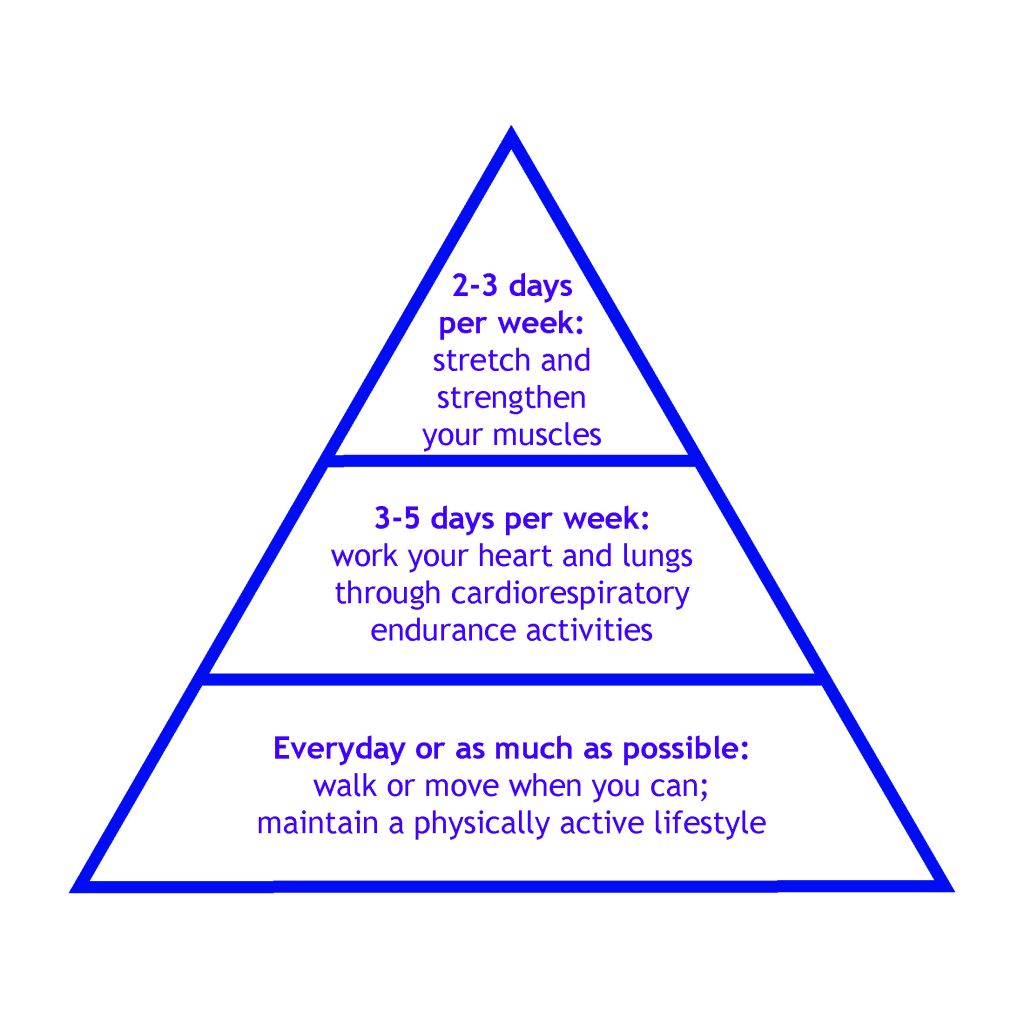12.7 Physical Activity Guidelines Summary
The Physical Activity Guidelines for Americans recommends that all healthy adults ages 18-64 engage in at least 150 minutes of moderate-intensity or 75 minutes of vigorous-intensity aerobic activity per week, or some combination of the two (Garber et al., 2011). The activity can be done in short bursts. In addition to aerobic activity, it’s recommended that adults perform resistance training for all major muscle groups at least two days per week. Finally, the American College of Sports Medicine recommends at least two to three days of full body stretching to increase flexibility (American College of Sports Medicine, 2011).
Physical Activity Recommendations and Examples Summary Table
| Light Intensity | Moderate Intensity | Vigorous Intensity | Muscular Strength and Endurance Activities | Flexibility (Stretching) Activities | |
|---|---|---|---|---|---|
| Recommendations | No specific recommendations, but maintaining a physically active lifestyle and minimizing sedentary activities is recommended. | 150 minutes per week even in short increments.
*Alternatively, you can combine moderate and vigorous intensity activities. |
75 minutes per week even in short increments.
*Alternatively, you can combine moderate and vigorous intensity activities |
Total body strength training at least two days per week with 48 hours rest between muscle groups. | Total body stretching at least three days per week. |
| Examples |
|
|
|
|
|
Keeping it in Perspective with the Physical Activity Pyramid
One way to think about physical activity and exercise is by using a pyramid model. Being physically active in daily living is at the bottom of the pyramid; it lays the foundation. On this foundation you’ll find cardiorespiratory endurance activities of moderate to vigorous intensity, which can be spread out over the week. Resistance exercises and flexibility training are at the top of the pyramid and should be done two to three days per week. Meeting the recommendations requires some planning and forethought, but making physical activity a priority in your life—to the greatest extent possible—can have lasting benefits.

Self-Assess Your Understanding
- Summarize the recommended frequency and duration of the components of fitness.

